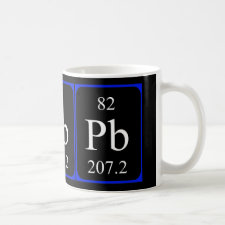
Authors: He YY, Xiao W, Li GY, Yang F, Wu P, Yang T, Chen CM, Ding P
Article Title: A novel lead-ion-imprinted magnetic biosorbent: preparation, optimization and characterization.
Publication date: 2019
Journal: Environmental Technology
Volume: 40
Issue: (4)
Page numbers: 499-507.
DOI: 10.1080/09593330.2017.1397762
Abstract: A novel biological material with high adsorption capacity and good selectivity for Pb2+ was synthesized. Response surface methodology was utilized for the optimization of the variables during the synthesis. The synthesized biosorbent was characterized by scanning electron microscope (SEM), Fourier transform infrared spectroscopy (FT-IR) and X-ray diffraction (XRD). The optimized preparation condition for lead-ion-imprinted magnetic biosorbent (Pb(II)-IMB) was obtained (0.19 g chitosan (CTS), 0.43 g magnetic Fe3O4 and 2.11 mL/gCTS of epichlorohydrin). The highest value for the removal of lead ion was estimated to be 86.85%, with an absorption capacity of 69.48 mg/g. The characterization results indicated that Pb(II)-IMB was rich in adsorbable groups to adsorb metal ions. Because of the magnetic property of the synthesized products, it can be separated from the water easily. The relative selectivity coefficients of Pb(II)-IMB for Pb(II)/Cu(II), Pb(II)/Cd(II) and Pb(II)/Ni(II) were 2.32, 2.20 and 2.05 times higher than the non-imprinted magnetic biosorbent, respectively. Pb(II)-IMB could be reused at least five times with only ~13% loss. These results suggested that Pb(II)-IMB was a new, efficient and low-cost material for removing Pb(II) from wastewater
Template and target information: lead ion, Pb(II)
Author keywords: Nanopaticles, lead ion imprinted, Response surface methodology (RSM), adsorption, removal of lead ions in water



Join the Society for Molecular Imprinting

New items RSS feed
Sign-up for e-mail updates:
Choose between receiving an occasional newsletter or more frequent e-mail alerts.
Click here to go to the sign-up page.
Is your name elemental or peptidic? Enter your name and find out by clicking either of the buttons below!
Other products you may like:
 MIPdatabase
MIPdatabase









